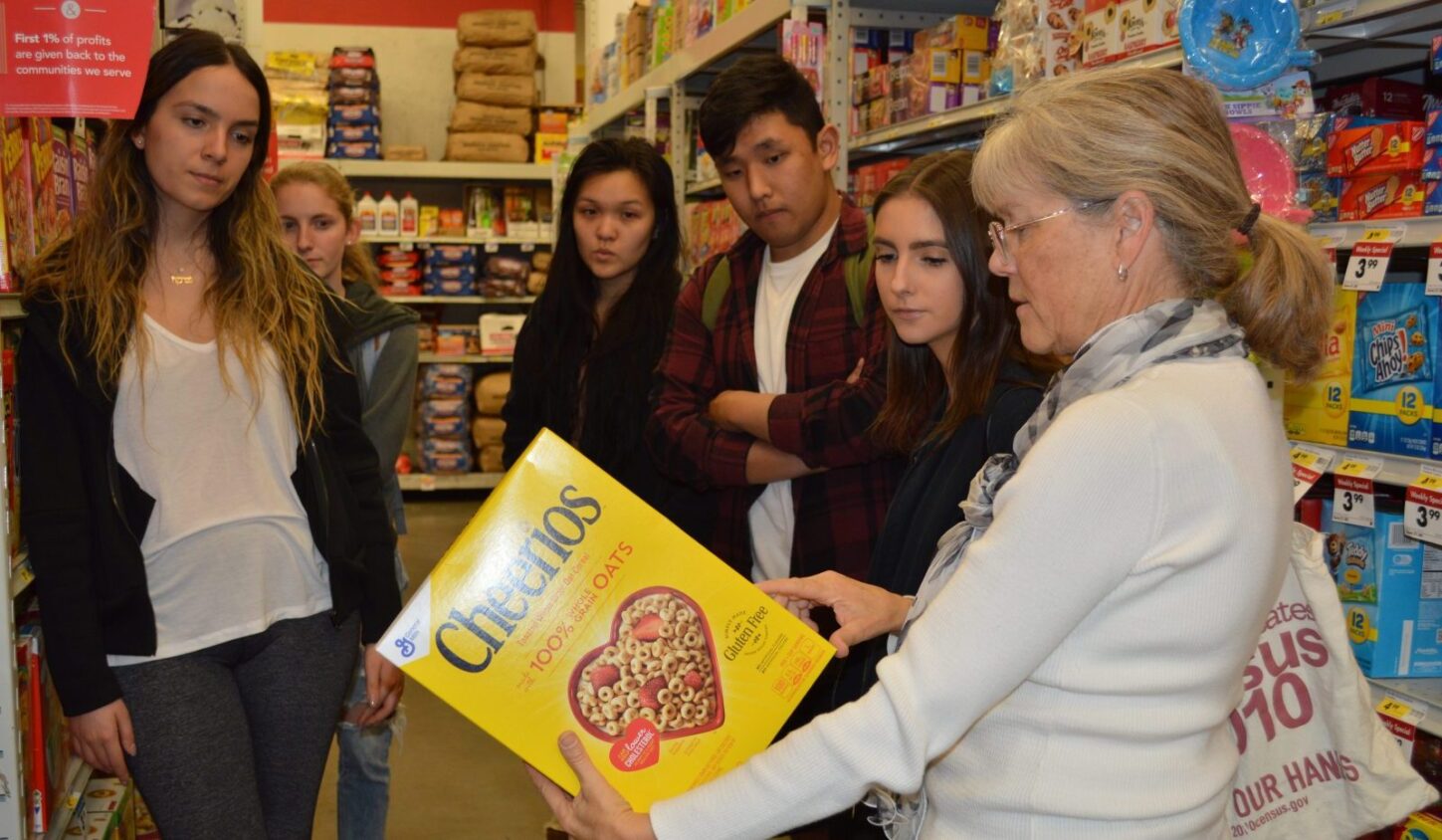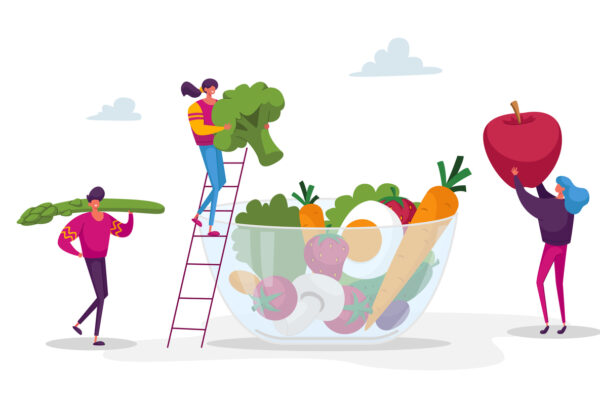Until recently, USC senior Steve Park didn’t know beans about beans. But thanks to a legume lesson during a recent class field trip through the aisles of a local supermarket, the lifespan health major at the USC Leonard Davis School of Gerontology has ditched the can and learned, with some trial and error, to prepare them on his own.
“My first time, I was eating essentially raw beans and didn’t know what was wrong,” said Park, who figured out that he forgot to soak them overnight. “But choosing to cook my own beans has made me more conscious about my eating habits because I’m actually taking the time to cook my meals.”
Providing students like Park with confidence in the kitchen, awareness of how to read food labels, and tools to make informed buying decisions is why supermarket shopping is on the syllabus of Gero 411, the physiology, nutrition and aging course Assistant Instructional Professor Cary Kreutzer teaches at the USC Leonard Davis School.
“Some students are coming from homes where meals were purchased and prepared for them and they were not part of the shopping or cooking process,” said Kreutzer, a registered dietitian who is also the director of the Leonard Davis School’s master of science program in Nutrition, Healthspan and Longevity.
She says she started taking undergrads to grocery stores to address this gap in knowledge and to show them that are easy ways to cut food costs and establish healthy habits.

Assistant Instructional Professor Cary Kreutzer discusses healthy meal options with her Gero 411 students.
“Studies show you don’t have to spend more to eat healthy,” said Kreutzer, who points students to affordable options like the bagged beans—which Park purchased—along with frozen vegetables, mixed nuts and canned tuna. “If you are eating too many meals and snacks out, it is probably costing you in terms of your nutrition and your bank account.”
A diet high in fruits and vegetables is one of the most important factors in preventing many diseases that are associated with aging, like cancer, diabetes and Alzheimer’s disease. Kreutzer hopes that providing information about nutritious options and critical thinking skills to evaluate choices can help improve their health over the long term.
“Some young people feel invincible and don’t necessarily think about downsides of a diet based on pizza and nachos,” said Kreutzer. “You can still enjoy those foods from time to time but it’s important to be an informed consumer when it comes to what you eat.”
Kreutzer and her graduate nutrition students provide instruction on how to navigate aisles filled with a seemingly endless array of choices and ingredients, taking time to compare the claims and contents of everything from cereal boxes to yogurt containers to granola bars.
“By going to the market, I was able to apply what I learned in class to actively differentiate healthy products and also learn some of the marketing techniques that companies use to make their products seem a lot healthier than they actually are,” said Park.
Gero 411 is offered in the fall and spring semesters and Kreutzer hopes to expand her outings to include additional student groups from across campus. In the meantime, we can all learn something from her top tips for becoming more supermarket savvy:
-
Shop the Perimeter
This is where you will usually find fresh fruits and vegetables, proteins and dairy products, which can all have a place in a healthy diet. US dietary guidelines recommend eating two cups of fruit and 2.5 cups of vegetables a day. However, most children and adults fall short of this. So, consider buying an apple or banana on your way out of the store next time.
-
Look Beyond the Labels
Food marketers want you to choose their products and often include misleading information in their packaging. For example, touting a food as fat-free does not mean it is automatically healthy or lower in calories. Take the time to look at the ingredients listed in the small print and make your decisions based on what is actually in the container, not what the claims may be.
-
Don’t Shop Hungry
We are scavengers and when we are hungry and wanting to eat, we will reach for whatever food is available. Even worse, when we are stressed our hormones kick in, and we seek comfort foods typically high in sugar, salt and fat such as fried chicken or ice cream. Shopping on a full stomach helps ensure you will buy what you need rather than what looks good at the time.
-
Serving Size Matters
You can have too much of a good thing. Even with so-called healthy foods, like nuts and avocados, it is important to keep track of your calories and fat intake. Be sure to pay attention to the recommended serving size, which in the case of some dense cereals like granolas could be as little as 5 tablespoons. In the case of Oreos, the serving size is three, not the whole package!
-
Frozen is Just as Good as Fresh
Frozen foods have the same nutritional value as their fresh counterparts. They won’t go bad if you don’t eat them right away and they can cost less too. Frozen fruits can be a great addition to a homemade smoothie, especially if you don’t have ice.
-
Join a Loyalty Program
It bears repeating that being healthy doesn’t need to cost more. Students can take advantage of savings offered by stores by joining loyalty programs or even cutting coupons. Just be sure to buy only items you need, not just what is on sale.
-
Buy in Bulk
This is another cost saver because it allows you to pack your own snacks instead of paying for unnecessary packaging. A large bag of carrots can be divided into daily servings. And you can get creative – make your own trail mix with different kinds of nuts and dried fruit.
-
Be Your Own Barista
Invest in an insulated mug and make your coffee or tea at home. You’ll know what you’re drinking—some chain-cafe drinks have more calories than a meal and more sugar than a milkshake—and you can keep the spare change.





